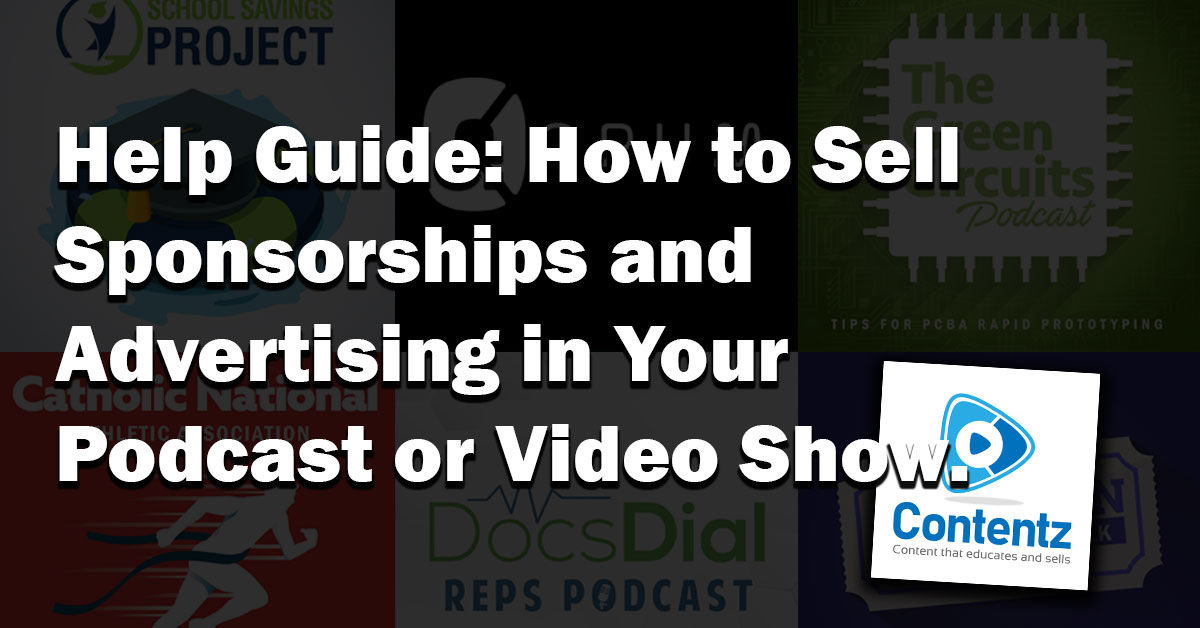Boomer Elmsdale

Sponsorship is an exciting and necessary part of operating a media product, as it brings in revenue and can help with distribution as well.
Sponsorship supports many podcast and video shows as the sole revenue source. Other shows choose not to integrate direct sponsor relationships. This can be the case for businesses relying on YouTube ads and those that are promoting their own services or products within the production.
For companies and organizations that do wish to integrate direct sponsorship, we have developed a brief how-to guide below with resources included that can help you launch a sponsorship campaign.
Potential sponsors are everywhere. Brands need marketing. People watch videos and listen to podcasts. The value sponsors get is being seen by the audience of a show or podcast. Partnering with an existing show to get your brand’s messages out there can be easier and cheaper than developing your own show for some companies. In this way, visualize who would benefit from your show.
Yet, finding the right sponsors for your show can be challenging.
Potential sponsors will have a similar target audience to your target audience. As you build your audience, a sponsor can benefit from this. Other aligned values can also be useful. For example, supporting kids sports leagues with a banner makes a lot of sense for local businesses because it brings them awareness and a positive message. It doesn’t mean that the banner drives customers on a daily basis. But the association and awareness is positive for a business. They share similar target audiences.
Traits of potential sponsorship partner
Visualize why somebody would want to sponsor your show before heading out to meet with potential sponsors. Granted, you will learn a lot by just getting out there and doing, but you do want to have an idea about what you think will help a sponsor before taking up their time.
What is your value proposition? Most sponsorship works by you promising to deliver an audience and conversion in terms of awareness or actual conversions. You can articulate this in three main ways.
Explain your show in concise terms, with specific demographics that you reach and how the audience interacts with your show. If you have an existing show, analytics can help tell the story. Look at audience demographics, keywords and location. That data is gold for sponsors. If you are planning a new show, then articulate your goals around the target audience and make some mathematically supported assumptions that help tell the story of the audience you’re building. You want to get to a number. You want to be able to speak about your projected audience size and demographics with confidence.
Explain what conversion that an advertiser can expect from partnering on the show. It can be helpful to plan where you will drive conversion throughout the show. You will also need to be able to track the conversions to back up what you say and to deliver reporting so your sponsor partner can assess progress during the upcoming episodes and campaign you are managing on their behalf. Commonly podcasts and videos introduce advertisers at the beginning, middle and end of their shows. In addition, advertisers often give shows a unique code or landing page to help track conversions based on the sponsor presence in-show.
In order to support sponsors, you will need to develop inventory. Shows often can carve out structural positions within the show to announce partners. You can also develop special segments within your show to feature sponsors. It is a delicate balance because you do not want to overwhelm your audience with sponsor messages that can be distracting and take away from your show content. However, a good sponsor will make sure to have a valuable offer for your audience and it should add value overall.
Common Assets in Podcast and Videos
A sponsor partner will expect professional experiences and results as you engage in your business relationship. Fulfillment includes all of the activities and assets that go into delivering the proposed campaign within your show. Fulfillment means doing the work and showing it to your client.
Suggested Process
Sponsor outreach tends to be a numbers game. Once you identify the traits (i.e. define profile) of sponsors that you feel are a good match for your show, the next step is to reach out to them and offer the space.
Sponsor Outreach Process